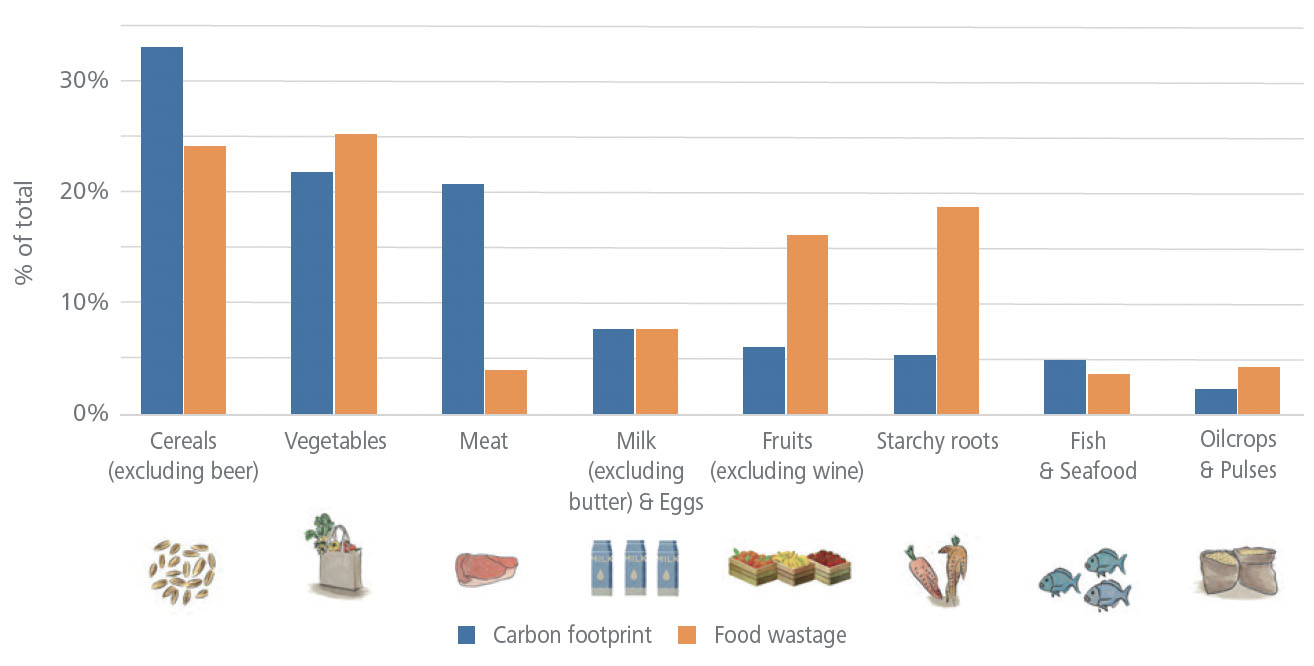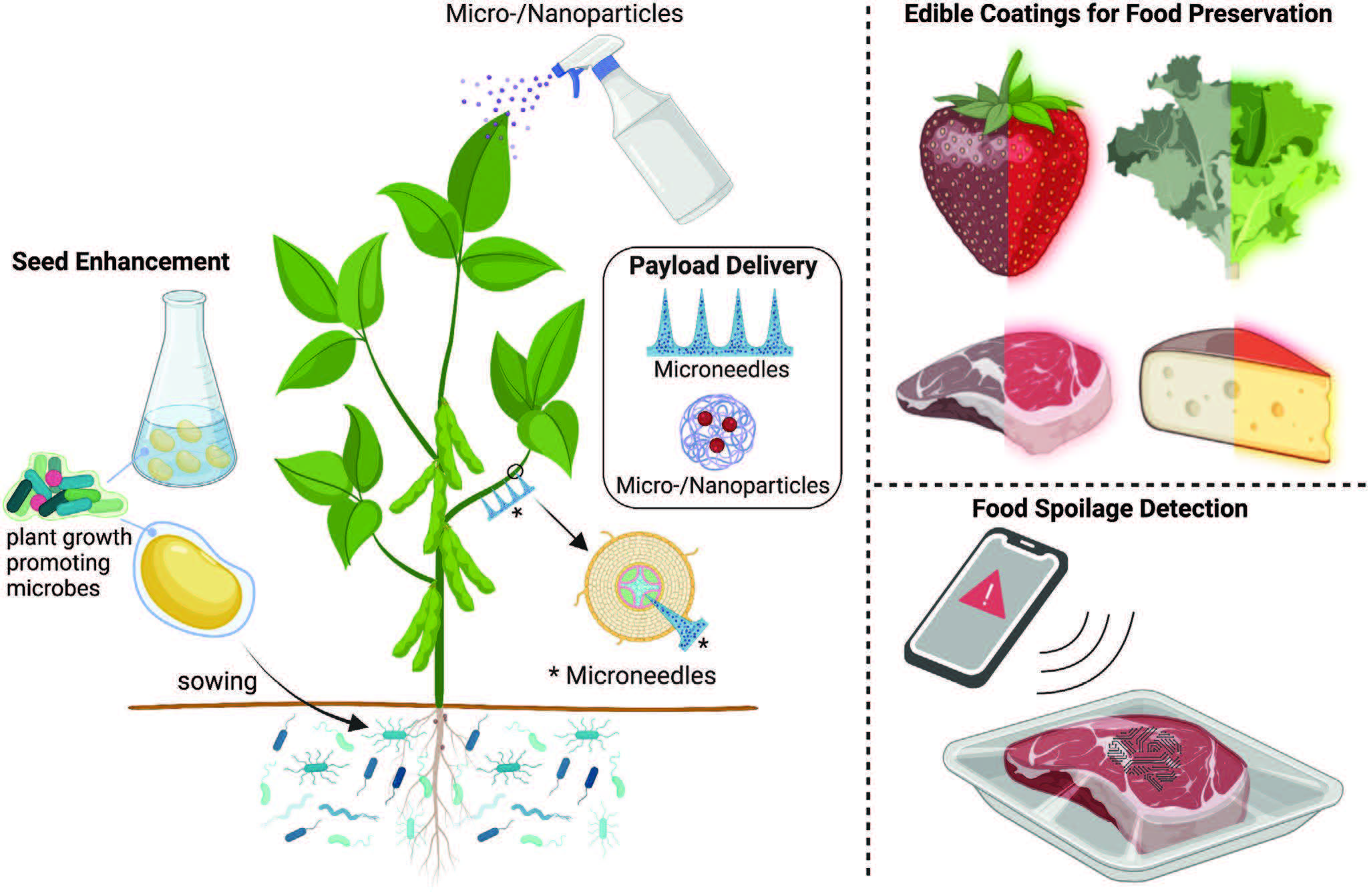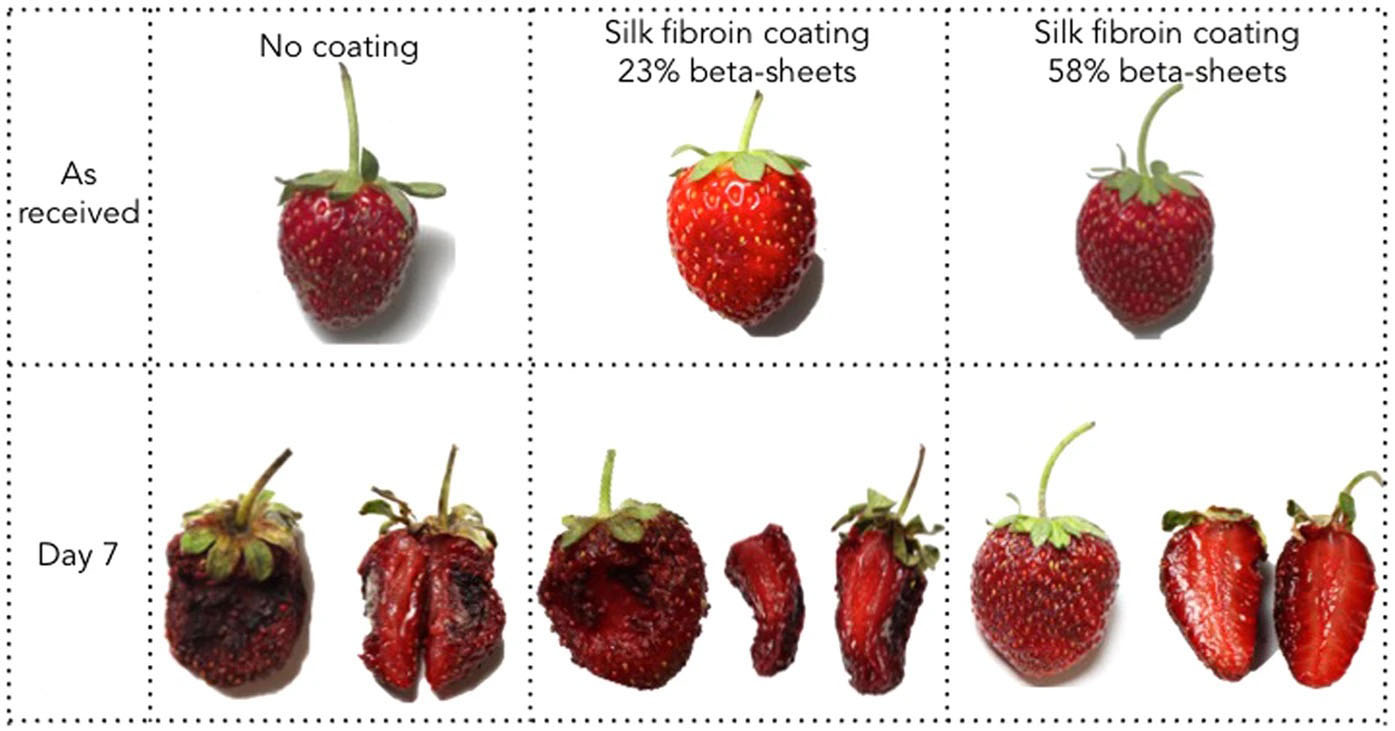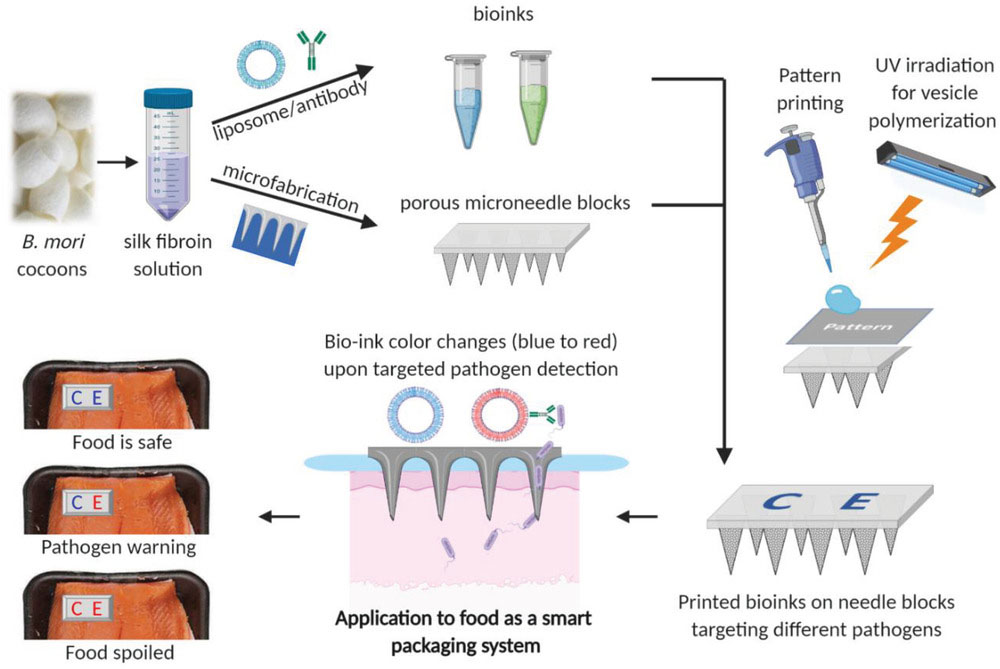| Jul 28, 2022 | |
Reducing food waste with novel biomaterials technologies |
|
| (Nanowerk Spotlight) Food waste reduction offers multi-faceted wins for people and planet, improving food security, addressing climate change, saving money and reducing pressures on land, water, biodiversity and waste management systems. Consider the staggering scale of the problem: | |
| Data gathered by the FAO (pdf), the Food and Agriculture Organization of the United Nations, estimates that around 931 million tonnes of food waste was generated in 2019, 61% of which came from households, 26% from food service and 13% from retail. This suggests that 17% of total global food production may be wasted. | |
| But that is not even the entire problem. Food loss and waste in fact heavily impact the environment as substantial amounts of land, water, energy, and plant nutrients are used to produce the food that is lost or wasted along the supply chain from farms to homes. | |
| One-fourth of freshwater consumed in global food production is effectively wasted since the food produced with this water is never consumed. If one includes the waste of meat products as well, the total amount of wasted surface water and groundwater is estimated to exceed 250 cubic km – the entire average annual flow of the Nile River. | |
| Besides, global food loss and waste generate annually 4.4 gigatonnes of CO2 equivalent (GtCO2 eq) gases, which corresponds to circa 8% of the total anthropogenic greenhouse gas (GHG) emissions. | |
| This means that the contribution of food wastage emissions to global warming is almost equivalent (87%) to global road transport emissions. Or in other words, if food wastage were a country, it would be the third largest GHG emitting country in the world. | |
 |
|
| Contribution of each commodity to carbon footprint and food wastage. Despite meat being a relatively low contributor to global food wastage in terms of volumes (less than 5% of total food wastage) it has a significant impact on climate change, contributing to over 20% of the carbon footprint of total food waste (see chart above). This is because meat carbon footprint includes the emissions from producing a kilogram of meat (e.g. the methane emitted by ruminants), the emissions related to feed provision (e.g. the fertilizer used for the production of feed) and emissions from manure management. Thus, efforts to reduce GHG related to food wastage should focus on major climate hotspots commodities, such as meat and cereals. (Source: FAO, Food wastage footprint & Climate Change) | |
| Numerous approaches are being taken to tackle the food waste problem. Some of them are technology-based with the goal of sustainably producing more food with less inputs (water and agrochemicals) and to minimize food waste from farm to fork (read more in this UN report: The role of science, technology and innovation in ensuring food security by 2030. | |
| Particularly interesting is the case of precision agriculture, where nanotechnology and artificial intelligence (AI), combined with robotics, geolocalization, smart sensors, and big data analysis, could hold the key to unlocking global food security challenge. | |
| Given all these efforts, a recent report in Advanced Functional Materials ("Biomaterials Technology for AgroFood Resilience") claims that the potential benefits of biomaterials-based innovation in agriculture and food production, however, remain underexplored. | |
| With this review, the authors aim to expand the current perception and scope of biomaterials by demonstrating how they can be engineered to interface with food and plants, to ultimately boost food security. In this respect, biomaterials design principles adopted in the medical field for drug delivery, gene therapy, and nanotechnology-based sensing and diagnostics serve as an inspiration and guidance for new applications in the AgroFood system. | |
| Biomaterials are commonly defined as a substance that has been engineered to take a form which, alone or as part of a complex system, is used to direct, by control of interactions with components of living systems, the course of any therapeutic or diagnostic procedure, in human or veterinary medicine. | |
| Numerous research projects have already shown the ability to engineer biomaterials – particularly sustainable and with a circular life cycle such as structural biopolymers – into advanced formats to benefit a broad range of practices in the agriculture and food industry, including seed enhancement, precision payload delivery in plants, perishable food preservation, and food spoilage detection. | |
 |
|
| Applications of biomaterials-based approaches and platforms in the agriculture and food industry. (Reprinted with permission by Wiley-VCH Verlag) | |
| Specifically, as illustrated above, the authors dedicate their focus to four aspects where they believe biomaterials-based approaches and platforms can make a real impact. In each section, they introduce and discuss biomaterial design principles, emerging micro-/nanofabrication strategies, and the advantages and disadvantages of different delivery, preservation and sensing platforms. | |
1) Seed enhancement technology |
|
| This section discusses numerous recent advances in the efforts to use biomaterials to engineer the seed microenvironment through seed priming and seed coating, as well as the incorporation of nanotechnology and nanofabrication in seed enhancement technologies (for instance, for nanofiber-based seed enhancement). | |
| Enhancement is achieved through the development of advanced seed coatings that combine biodegradation with encapsulation, preservation, and controlled release of payloads (particularly plant growth-promoting microbes) to the seeds and their rhizosphere. | |
2) Precision multi-scale payload delivery to plants |
|
| In this section, biomaterial-based precision delivery platforms for plants are first discussed, followed by an overview of strategies to optimize the release profiles of various agrochemicals. | |
| Precision delivery of agrochemicals to targeted plant tissues and organelles through microneedles- and nanoparticles-based platforms that fulfills plant needs while avoiding run off and side effects to the environment is of great importance in agriculture to ensure high crop yields and at the same time minimize their environmental impacts. | |
3) Edible coatings for food preservation |
|
| This section breaks down the commonly used components for food coatings – polysaccharides, proteins, lipids, and composites – discusses their advantages and disadvantages, and introduces their applications in various food systems. | |
 |
|
| Ripening and weight loss of strawberries coated with edible silk fibroin coating. Time-lapse of strawberries ripening. As picked strawberries were stored at 22?????C and 38% RH (no coating) or dip coated in silk fibroin suspension (23% beta-sheets coating). Water annealing was used as post-process to modulate the relative content of beta-sheets in silk fibroin. At day 7, silk fibroin coating showed to improve the quality of the stored strawberries. (Reprinted from doi:10.1038/srep25263 under a Creative Commons Attribution 4.0 International License) | |
| One significant portion of food waste comes from the premature deterioration of perishable commodities. As many fruits and vegetables possess high metabolic activity and suffer from severe microbial/fungal contamination, they have very short shelf-life post-harvest. To extend the shelf life of perishable food, traditional treatments including cryopreservation, exposure to chemical fungicides, the addition of synthetic preservatives, modified atmosphere packaging and osmotic treatments, etc. have proved to be useful. | |
| Meanwhile, the application of edible coatings on food has also emerged as a simple and effective strategy to preserve food against fast exchange of gases with the environment and microbial growth. | |
4) Detection of food spoilage and pathogen |
|
| This section introduces recent studies on biomolecules and bio-inspired materials/approaches to develop sensors, devices, and platforms for detecting food spoilage and pathogen. | |
| Despite all the advances, researchers are still struggling to develop low-cost food sensors that provide real-time food quality and pathogen information to non-expert customers. | |
| The materials used for the new food sensing platforms should be safe upon contact with food (i.e., approved as food contact materials) and sustainable in their life cycles (e.g., biodegradable or upcyclable). They also need to meet the law, policy, and public perception restrictions, which are becoming stricter worldwide. | |
| Many researchers seek innovative solutions using polymeric materials produced by living organisms, such as structural/extracellular proteins and polysaccharides. Biomaterials developed for diagnostic or therapeutic purposes can be successfully adapted to develop new food sensing materials or sensing platforms. | |
 |
|
| Schematic illustration of a food quality monitoring system using silk microneedle arrays with printed bioinks as colorimetric sensors. (Reprinted from doi:10.1002/adfm.202005370 with permission by Wiley-VCH Verlag) | |
| The authors conclude their review by noting that together, these new applications of biomaterials provide disruptive innovations with a big impact on sustainable farming, food security, and food safety, which will in turn strengthen human health and thereby circle back to biomaterials' traditional mission of improving the quality of life. | |
 By
Michael
Berger
– Michael is author of three books by the Royal Society of Chemistry:
Nano-Society: Pushing the Boundaries of Technology,
Nanotechnology: The Future is Tiny, and
Nanoengineering: The Skills and Tools Making Technology Invisible
Copyright ©
Nanowerk LLC
By
Michael
Berger
– Michael is author of three books by the Royal Society of Chemistry:
Nano-Society: Pushing the Boundaries of Technology,
Nanotechnology: The Future is Tiny, and
Nanoengineering: The Skills and Tools Making Technology Invisible
Copyright ©
Nanowerk LLC
|
|
|
Become a Spotlight guest author! Join our large and growing group of guest contributors. Have you just published a scientific paper or have other exciting developments to share with the nanotechnology community? Here is how to publish on nanowerk.com. |
|
